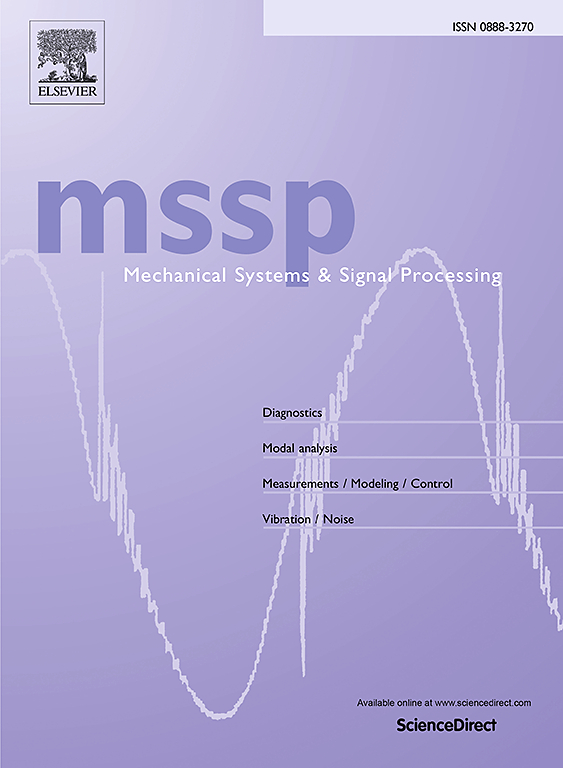Repetitive transient impact detection and its application in cross-machine fault detection of rolling bearings
IF 7.9
1区 工程技术
Q1 ENGINEERING, MECHANICAL
引用次数: 0
Abstract
This paper aims to develop a rolling bearing fault detection method that can be directly applied to unseen domains, addressing the limitations of current transfer learning methods, include the dependency on target domain data for domain adaptation methods and the lack of interpretability for domain generalization methods. Inspired by the intrinsic indicator of rolling bearing fault, i.e, repetitive transient impact phenomenon, a detector for this phenomenon is proposed and applied to fault detection. First, to preserve and highlight the transient impact phenomenon in signals, a time–frequency transformation hyperparameter selection strategy suitable for any sampling frequency, bearing type, and operating condition is proposed. Next, a universal nonlinear processing method that decouples diagnostic results from signal energy is designed and applied to the obtained spectrogram to ensure that the model focuses on capturing transient impact phenomenon rather than signal energy (which varies across different machines). Finally, we design a clean and interpretable CNN architecture to avoid overfitting and conduct visual analysis to verify its interpretability. The model trained on a single dataset is tested directly on three completely unseen datasets, confirming the method’s remarkable ability for cross-machine, cross-sampling frequency, cross-operational condition, and cross-transmission path detection of rolling bearing faults. Additionally, we provided detailed visual validation for the proposed hyperparameter selection strategy and nonlinear processing method. Source code is available at: https://github.com/kangxin8/Repetitive-transient-impact-detector/tree/master.
求助全文
约1分钟内获得全文
求助全文
来源期刊

Mechanical Systems and Signal Processing
工程技术-工程:机械
CiteScore
14.80
自引率
13.10%
发文量
1183
审稿时长
5.4 months
期刊介绍:
Journal Name: Mechanical Systems and Signal Processing (MSSP)
Interdisciplinary Focus:
Mechanical, Aerospace, and Civil Engineering
Purpose:Reporting scientific advancements of the highest quality
Arising from new techniques in sensing, instrumentation, signal processing, modelling, and control of dynamic systems
 求助内容:
求助内容: 应助结果提醒方式:
应助结果提醒方式:


